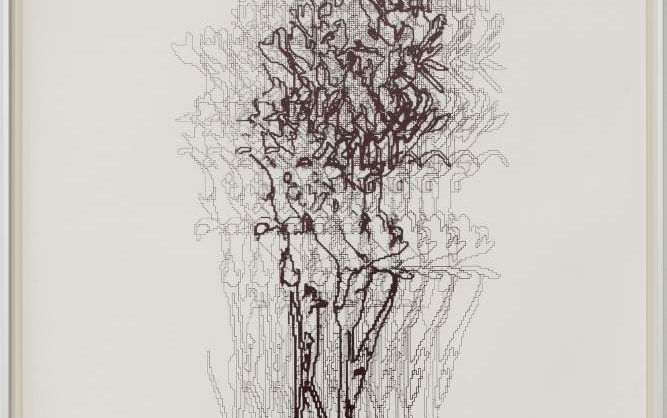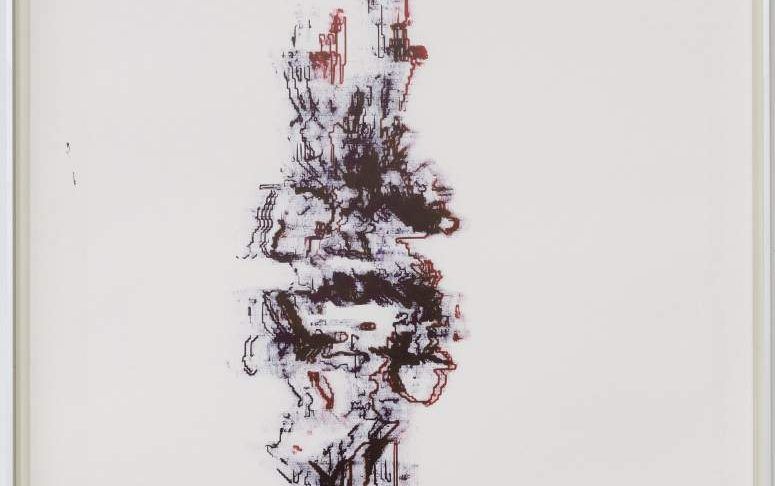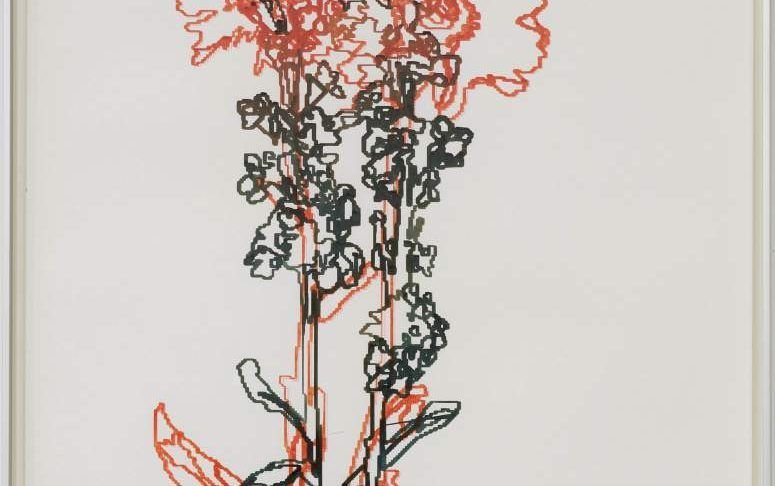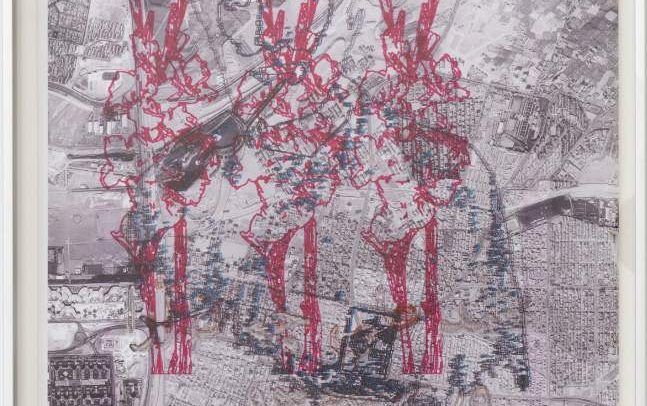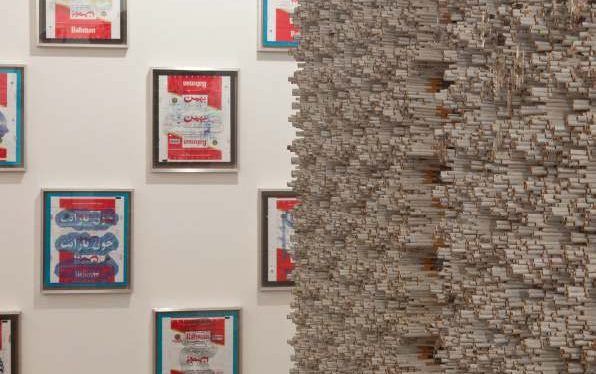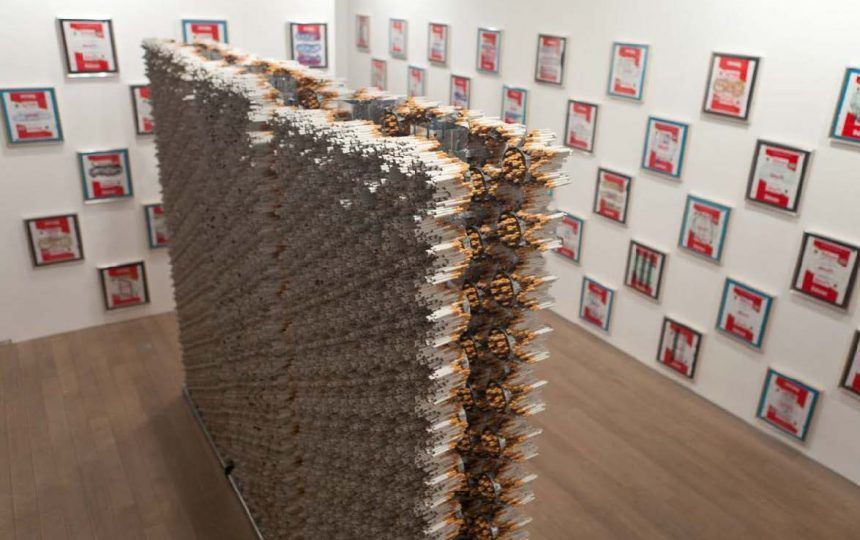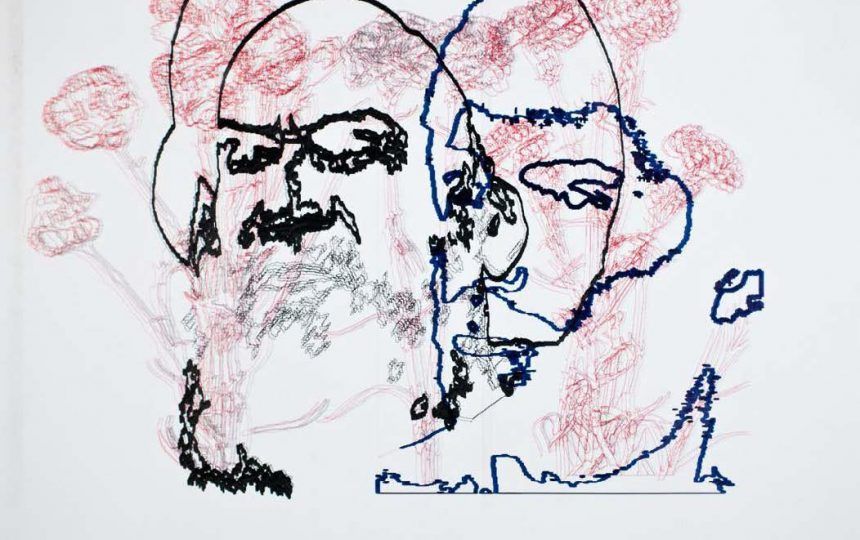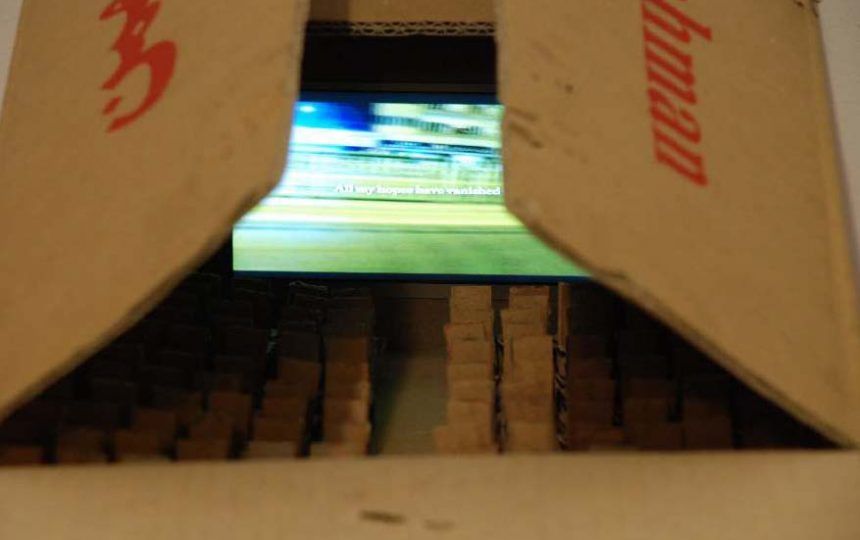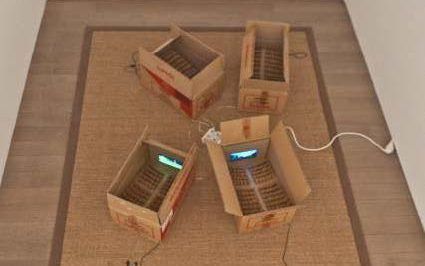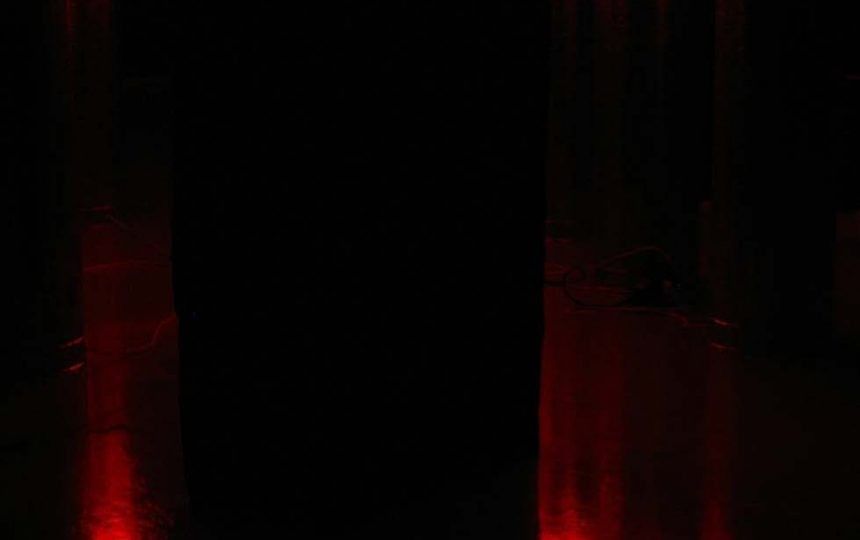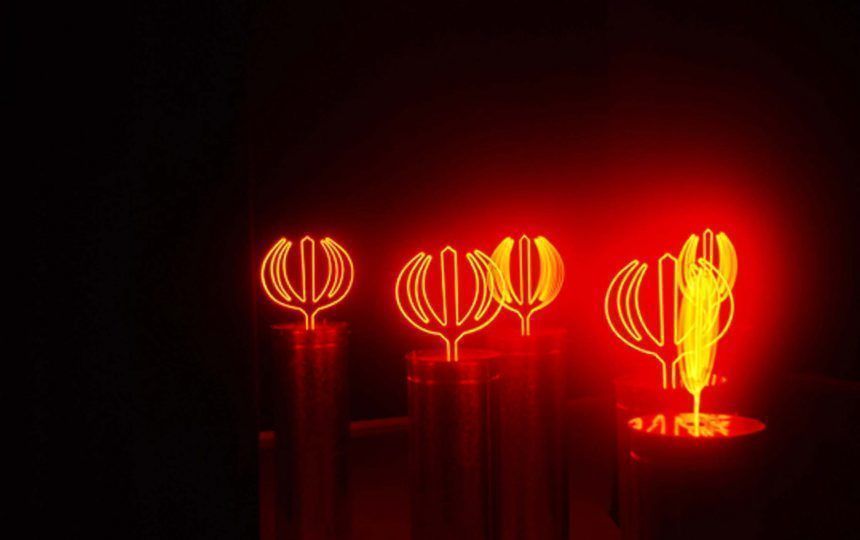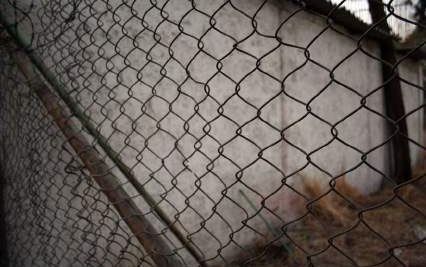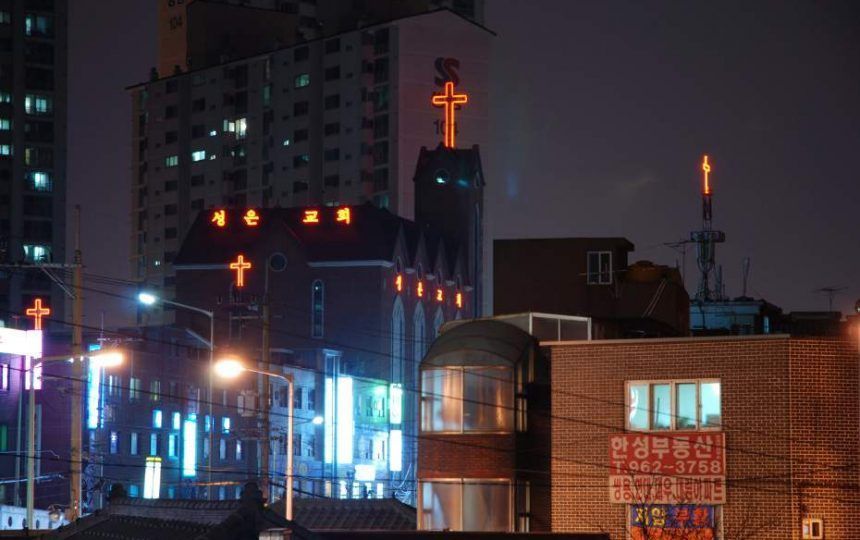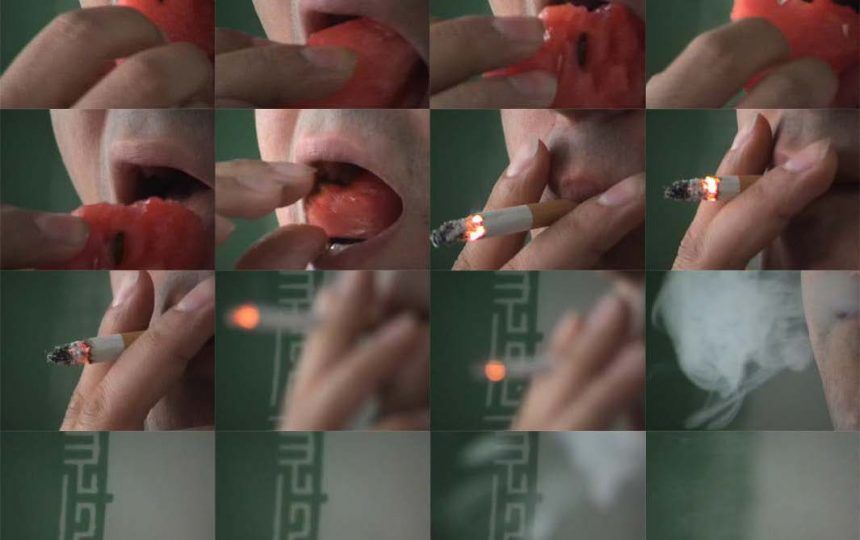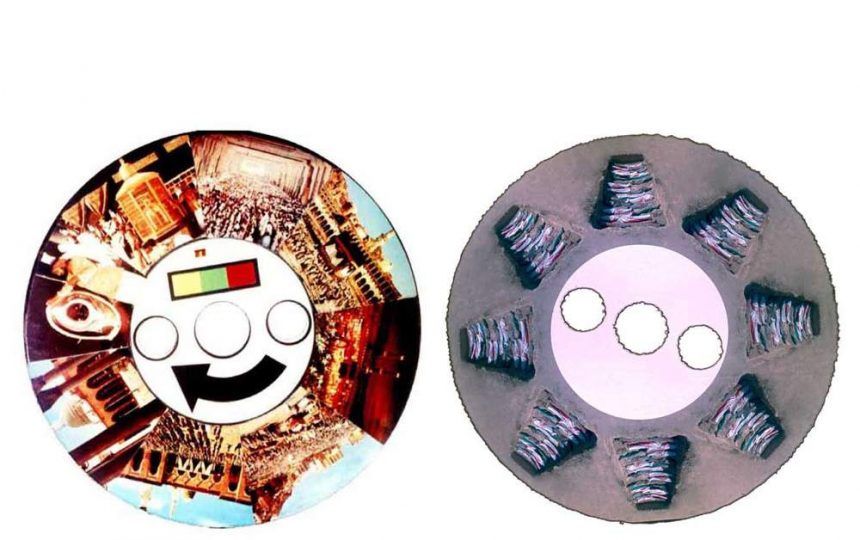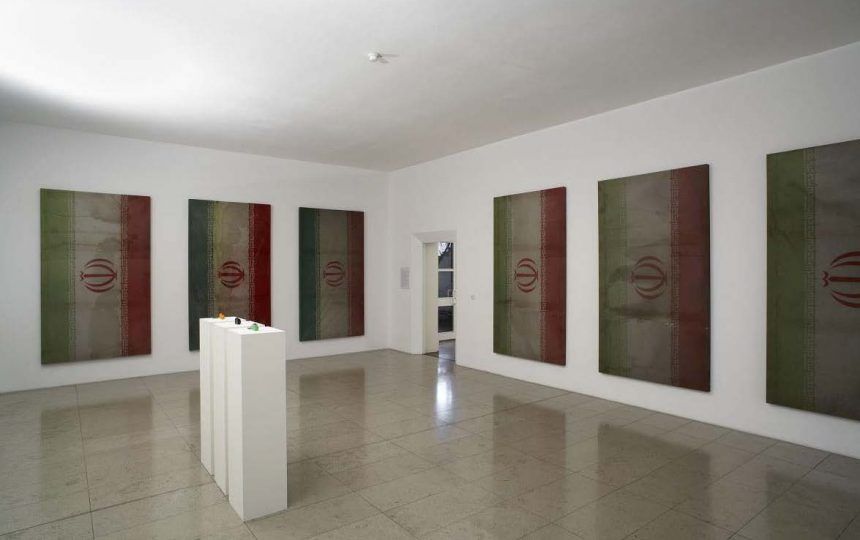By Kayhan Life Staff: On August 19, 1978, Cinema Rex, a crowded movie theater in the Iranian port city of Abadan was set on fire, leaving at least 377 people dead. The arson attack was one of the most tragic episodes of its kind in the history of Iran, and a major milestone in the lead-up to the Iranian Revolution that unfolded shortly afterwards.

Hundreds of people had packed the theater in an impoverished working-class district of Abadan to watch The Deer (Gavaznha, directed by Masud Kimiai and starring Behrouz Vossoughi) when four men barred the doors of the cinema, doused the place with gasoline, and set fire to all four sides of the building to prevent rescue attempts. Of a total of 700 people, an estimated 100 managed to escape unhurt via the roof. Another 223 were injured. The remaining 377 were tragically trampled to death, asphyxiated or burned alive.  Thirty-eight years later, Narrative Projects – a contemporary-art gallery in London’s Fitzrovia – is presenting an exhibition by Iranian artist Mahmoud Bakhshi on the Cinema Rex fire. “The Unity of Time and Place” opens on January 27th and runs through March 11.
Thirty-eight years later, Narrative Projects – a contemporary-art gallery in London’s Fitzrovia – is presenting an exhibition by Iranian artist Mahmoud Bakhshi on the Cinema Rex fire. “The Unity of Time and Place” opens on January 27th and runs through March 11.
Bakhshi is transforming the gallery space into an immersive installation, replicating the cinema’s interior with vintage furniture and carpets. Films documenting the episode and archival footage will set the scene and tell the story of what happened on that fateful day.
“I believe that art is a way to react against society, a way to create something different,” said the artist, who was denied a U.K. visa to attend the opening of his exhibition. Bakhshi explained that whenever he left Tehran for longer than a couple of months, “at first I feel better, and relieved. But fear is addictive, and pretty soon, I feel the need to come back, because I’ve grown used to that sensation of stress and fear. The basis of all of my work is fear. The things I create are a way of purging my fears and dealing with the demons. I feel as if I’m powerless in terms of changing the bigger picture, and this is the only way in which I can vent my frustration.”
“My goal is not to invent a whole new style or to be the next big thing in contemporary art,” the artist said. “For me, these are essentially my reflections on the society around me. I am just drawing attention to what surrounds me and inviting people to think about it.“
The gallery’s founder Daria Kirsanova – an art historian and art theorist – said the exhibition took a year of research and conversations with the artist. “Mahmoud Bakhshi reflects on the recent history of Iran through a re-contextualisation of the official symbolism of the Islamic Republic of Iran,” she said.
“He uses deeper historical and traditional formal references to ground this recent history within the larger context of Iranian identity.”
The exhibition draws parallels between the Cinema Rex fire and the coup d’etat of 1953, which occurred 25 years to the day before the fire. “Both events had a crucial impact on the history and transformation of not only Iran but the entire region.”
Bakhshi will also take part in the exhibition opening February 4 at the Aga Khan Museum in Toronto, titled “Rebel, Jester, Mystic, Poet: Contemporary Persians.”
[aesop_content color=”#FFFFFF” background=”#7e7e7e” width=”content” height=”auto” columns=”1″ position=”none” innerposition=”10px, auto, auto, auto” imgrepeat=”no-repeat” floaterposition=”left” floaterdirection=”up” revealfx=”off”]WHAT HAPPENED AFTER THE FIRE
No one has ever claimed responsibility for the Cinema Rex fire. There were rumors that it may have been timed to coincide with the 25th anniversary of the CIA-backed coup that returned the Shah to power after a brief exile in 1953. To Iran’s then information minister, it was the work of “fanatics” and directed against “all signs of modern living and Westernization in Iran.” Islamic militants, on the other hand, blamed the Shah and the SAVAK, the secret service. They said that Cinema Rex had been specifically targeted to kill political dissidents who had gathered to watch a controversial anti-government film.
In a follow-up to the case demanded by the victims’ families, Captain Monir Taheri was arrested by the new government, found guilty by a revolutionary tribunal (which also accused him of receiving guerrilla training in the United States), and executed on February 23, 1979. His family maintained his innocence in an open letter published after his death, stating that he had never traveled abroad, and had not been in Abadan at the time of the blaze.
A subsequent campaign led by the victims’ families, including a four-and-a-half month sit-in at a government office, led to a reopening of the Cinema Rex case, and the public execution in 1980 of the only survivor of the four-man arson team, Hossein Takbalizadeh, together with five others.
[/aesop_content]
[aesop_content color=”#000000″ background=”#D3D3D3″ width=”content” height=”auto” columns=”1″ position=”none” innerposition=”10px, auto, auto, auto” imgrepeat=”no-repeat” floaterposition=”left” floaterdirection=”up” revealfx=”off”]MORE ON MAHMOUD BAKHSHI
Born in 1977 in Tehran, Mahmoud Bakhshi graduated with a BA in Sculpture from the Faculty of Fine Arts at Tehran University. He lives and works in Iran, and has participated in numerous solo and group exhibitions internationally including:
“Endless Celebration,” solo exhibition, Kiev (2016)
“The Great Game,” National Pavilion of Iran at the 56th Venice Biennale (2015)
“All the World’s Futures,” 56th Venice Biennale main exhibition (2015)
“Recalling the Future: Post-revolutionary Iranian art,” Brunei Gallery, SOAS, University of London (2014)
“Love Me, Love Me Not, Contemporary Art from Azerbaijan and its Neighbors”, 55th Venice Biennale ( 2013)
“Disaster,” Galerie Thaddaeus Ropac, Paris (2013)
“Transformed Visions,” Tate Modern, London (2012)
“The Engaged Artist: Influences of Graphics on Sculpture in the Middle Ages,” solo exhibition, Saatchi Gallery, London (2010).
[/aesop_content]
The art of Mahmoud Bakhshi

